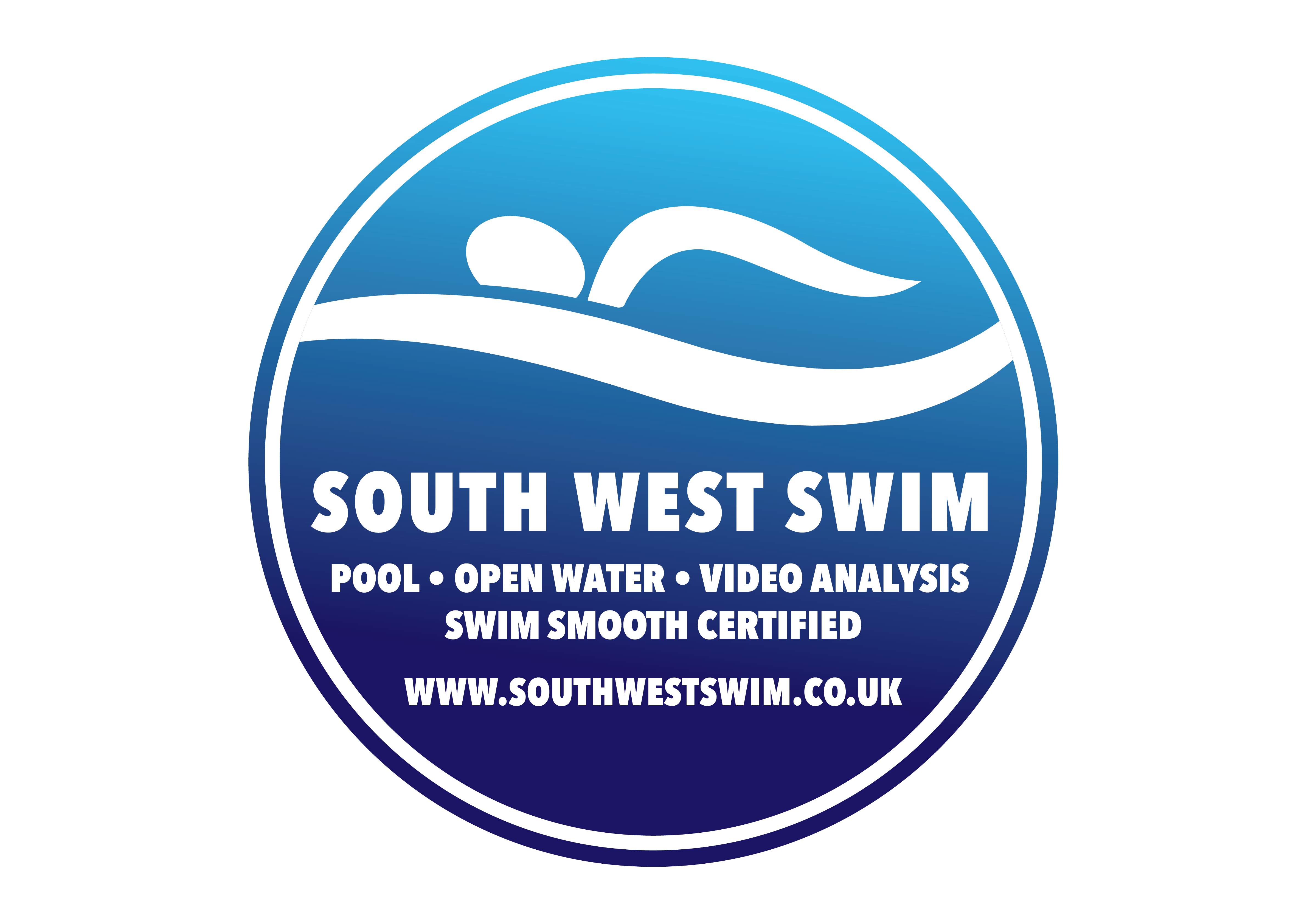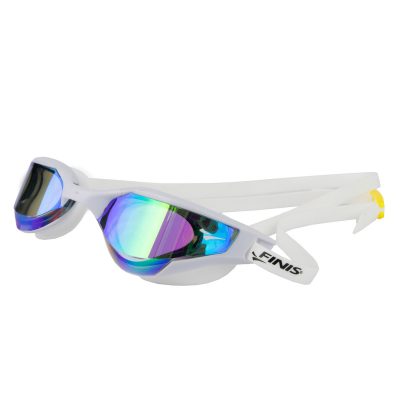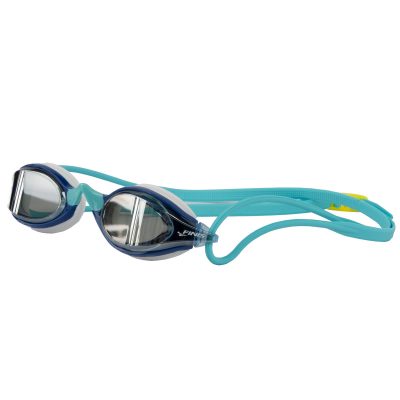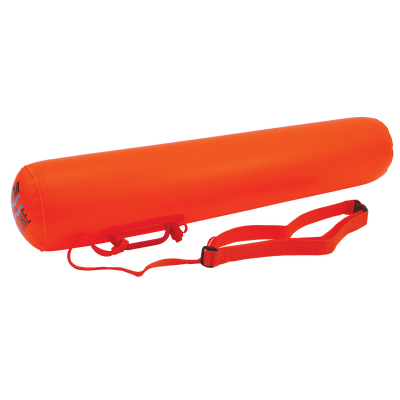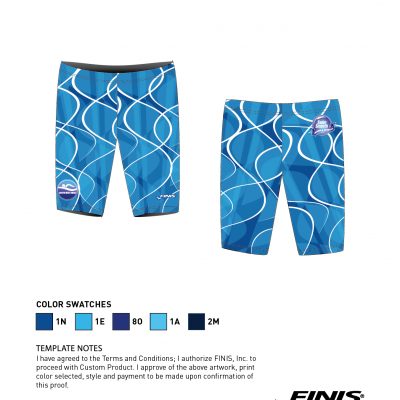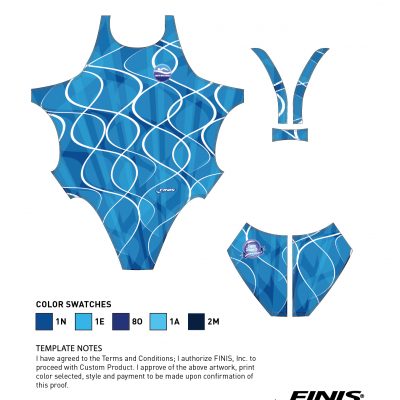Swim Straight & Pace Right
Jason Tait, South West Swim Coaching & Retail
 Last week we wrote about the start and finish of an event, see The Washing Machine – Swim starts and Finishes.
Last week we wrote about the start and finish of an event, see The Washing Machine – Swim starts and Finishes.
In the second part of our race skills blogs we are going to look at sighting and pacing. Both of these skills are very important to your event swim and are worth consistent practice in both the pool and open water.
But do you know how to get the best out of these skills ready for your event? Hopefully we can give you a little nudge in the right direction.
Sighting
In my opinion the most important skill in open water and the first open water specific skill we teach in an athlete’s first open water session. Good sighting will mean you swim a more direct line to your markers when swimming, meaning your 1500 metre swim may actually track to a 1500 metre swim, and not to 1900m or worse. Poor sighting skills mean that you add distance, therefore also add time and exertion so its important for those athletes to get it right.
Not many athletes swim straight naturally, and this is a technical skill to develop depending on your individual stroke flaws. Good sighting can help you stay straight in your swim whilst these other skills are developed and eventually you will be able to reduce your sighting frequency.
When you ask an athlete how they sight, they often do not know; “it just happens” is a common answer I receive, alongside the “I have no idea” response. In fact many athletes do not have a technique or pattern to their sighting at all which can cause inconsistency and poor form in the water. At South West Swim we teach two prefered basic methods of sighting, with two more thrown in for other conditions. The method we adopt for a swimmer will depend partly on their stroke and how it looks and feels for them, but there are some key principles to have in the back of your mind when sighting:
- Have a pattern to your sighting. When you breath you have a pattern with most people breathing every x strokes, you get use to this pattern and it becomes second nature to you. Sighting can be the same, many athletes do not have a sighting pattern so they “forget” to sight! Sounds strange but in my experience it is true. Have a sighting pattern in your head of sighting every “x” breaths. This will give you consistency and rhythm.
- It’s all very well getting your sighting pattern correct but always make sure you look for your target when your head comes up to sight. This is the downside of getting a good sighting pattern, again you get use to doing it out of habit and can find you lift your head to sight without actually looking for your target.
- Sight low in the water! Your head is like a pivot point, in general the higher you lift it the more your legs will sink (or your back will bow like a banana) increasing drag as your body position changes. Try to lift your head low, so that only your eyes are out of the water, this is known as crocodile or alligator eyes.
- Sight quickly, don’t look around for your target buoy or landmark as the longer you keep your head up the more your body position changes. You want to be looking up for a quick glance at your target, adjusting course and moving on.
- Have a secondary sighting target, by this we mean choose something fixed on the landscape (building or tree for example) behind or near your target buoy. Use this as a secondary sighting target as if you lose the buoy you will have something else to focus on to get you roughly in the area you want to be.
Eyes closed test
To get an idea on how often you need to sight you can perform the “eyes closed” test, preferably with a partner. In a lake face your target buoy and swim 20 strokes towards it, with your eyes closed all the time! After 20 strokes stop and face in that direction, are you facing the buoy or another direction? 20 strokes gives you a nice gauge into how quickly you can go off course in your stroke and you can work out how often you should start your sighting practice. Having a second person watching you is good for safety but also it they are behind you they can advise when you started to pull off course. A lot of swimmer swim straight and then suddenly pull to one side, nudging them off course. This done over a number of strokes can cause a big shift in direction. This drill can also be done in a pool but mind out for other swimmers, lanes ropes and pool sides and ends (definitely one to have a swim partner or coach to help you with).
To finish a quick note on crocodile eyes sighting. This is an effective method of sighting in the right conditions,  however as like other open water skills you have to adapt to the environment at the time of your swim. In rougher, choppier waters you may find crocodile eyes sighting not as effective, as all you will see is water coming towards you. In this instance adapt your sighting method to be higher in the water, chin on surface is usually adequate. This will give a cleaner line of sight to your target through the choppier waters, and remember your secondary sighting target as well.
however as like other open water skills you have to adapt to the environment at the time of your swim. In rougher, choppier waters you may find crocodile eyes sighting not as effective, as all you will see is water coming towards you. In this instance adapt your sighting method to be higher in the water, chin on surface is usually adequate. This will give a cleaner line of sight to your target through the choppier waters, and remember your secondary sighting target as well.
Pacing your race
Last week we wrote about the start of the race and positioning to get the best out of your abilities, pacing comes into the start quite heavily and also carries on throughout the swim. (last weeks blog can be found here)
Their use to be a belief that you need to do a massive sprint start at the start of your race, kicking and pulling with all your might for hundreds of metres before settling into a normal race pace. This is great if you’re competing at a fairly high level and have trained to race this way (and also able to vary your pace depending on your competitors or race environment) but for mere mortals it may be your worst enemy.
Whilst, a faster paced start can be useful to those high-end athletes the thoughts of some swim coaches (including myself) have moved more towards getting consistency in pace throughout the whole race. Start fast, but only start fast for 50m/100m or so to give you some space in your surroundings, and I would still suggest this is only a slightly faster pace than normal. Easing into your race pace as soon as possible and keeping this consistent throughout the swim is going to save you energy and make you more consistent throughout, reducing fatigue in the later stages of the race. A lot of world records in the pool are set where the pace in the first half of the race is the same or within a whisker of the second half of the race (our friends at swim Smooth recently wrote a blog about this topic).
Not many of you will go out and break a world record but good pacing skills will certainly make your life easier and hopefully give a more even and productive swim, and also bike and run. Remember, there are no prizes for being first to the 400m buoy.
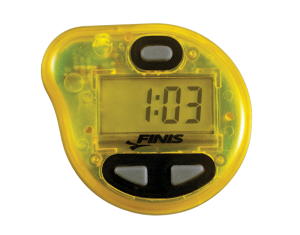 Pacing is a key area of improvement that is needed for most athletes. In our sessions at South West Swim we focus heavily on this and the use of a Finis tempo trainer is highly recommended. Used alongside CSS training it is a staple of our programme throughout the year, especially in winter when most of our athletes are in the pool with us building skills, fitness and speed. If you have never tried CSS based training it will be a real eye opener and your swim will start to benefit very quickly as you start to “feel” the pace in your own swims.
Pacing is a key area of improvement that is needed for most athletes. In our sessions at South West Swim we focus heavily on this and the use of a Finis tempo trainer is highly recommended. Used alongside CSS training it is a staple of our programme throughout the year, especially in winter when most of our athletes are in the pool with us building skills, fitness and speed. If you have never tried CSS based training it will be a real eye opener and your swim will start to benefit very quickly as you start to “feel” the pace in your own swims.
CSS training, In its simplest form, can be thought of as kind of beep test, where the tempo trainer is set to your CSS pace, found by performing a CSS test (a 400m and 200m time trial swim, for more info see our friends at Swim Smooth’s article on this). Once you set your tempo trainer to this pace it will emit a beep every “x” seconds, on this beep you should be turning at the wall and you need to hold this pace and not fall off of it. At first this may seem difficult but you will soon find yourself being able to settle into your pace and rhythm fairly effortlessly. Obviously the longer the distance of your set the harder this standard pace will be to keep (the shorter the set the easier). This is where we start to plus or minus our CSS paced sets to make you a faster, more controlled swimmer over various distances.
To find out more about CSS based training please feel free to contact us for more advice.
So that’s this weeks blog for you. Hopefully the few tips on sighting that were given can make you that little bit more efficient in your next event, but get into the water and practice the principles. Timing plays a big part in efficient sighting and the more you practice the easier it will become.
We carry on our open water practice in the pool year round, we don’t believe in giving these skills the chance to disappear or get neglected over the winter months and neither should you. Your pacing skills may take a while longer to develop but persevere with these and invest in a tempo trainer, it will become your best training buddy.
We can help you with all of your skills in our open water group or 1-2-1 sessions, or our pool sessions.
In our next blog we are going to cover a couple of new drills we have been working on recently for rotation and alignment, look out for our “fakey breathing” and “alignment kick” drills.
Jason Tait
South West Swim Coaching
South West Swim specialise in Open Water Swimming, stroke analysis and stroke correction for all levels of swimmer. South West Swims ethos is to improve athletes by focusing on swim technique, open water skills, confidence and fitness.
Sessions are held in the two finest swimming lakes in the Cotswolds (lake 32, Waterland outdoor Pursuits and Lake 12, South Cerney Outdoor) and various swimming pools in the Swindon area. Opening October 2015 we will also have our own private Endless pool for premier 1-2-1 coaching and video analysis sessions. Contact Swim@southwestswim.co.uk or visit our website at www.southwestswim.co.uk for more information on our services and tips and tricks.
